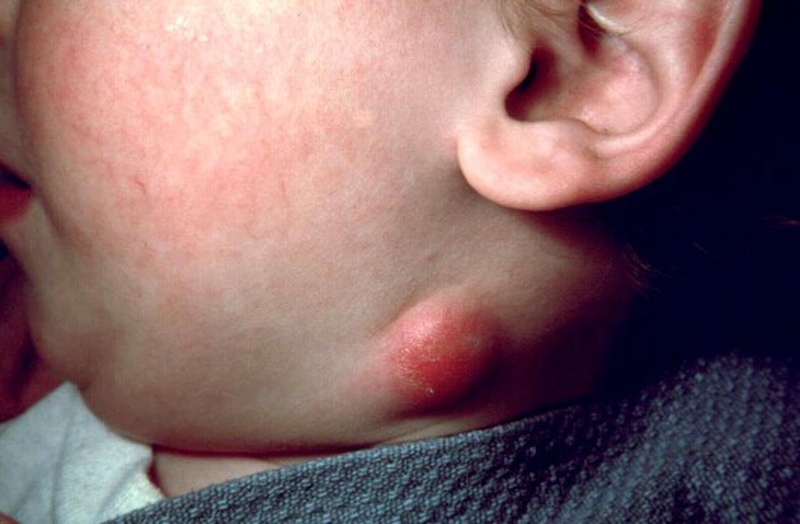Cat scratch fever, or cat scratch disease, gets its name because it is spread by the cats that are infected with the bacteria called Bartonella Henselae. According to the latest estimates by the Michigan Department of Agriculture & Rural Development, in the United States, approximately 24,000 people get this infection every year.

How Do Cats and People Get Infected?
There are many different ways in which a cat can get infected with B. henselae. For example, flea droppings may get into a cat's open wound, while scratching, leading to bacterial transmission. Additionally, flea bites and cat fights (when one cat is infected) are other common ways of bacterial transmission.
The bacteria can only transfer to humans when the infected cats scratch or bite them deep enough and break their skin, or when the bacterial agent entry into their eyes. The infected cat's saliva can also be a medium of transfer through licking on human's wounds or scabs.
How to Know If a Cat Has Cat Scratch Fever
It is very difficult to know whether your cat is a carrier of the disease, because they do not get sick themselves even when they are carrying the bacteria. Though cats acquire these bacteria from the fleas, so far there is no evidence to show that fleas can directly transmit the bacteria to human. Almost 40 percent of the cats are reported to have the bacteria at some time in their life cycle, especially when they are kittens. A veterinarian can test your cat whether it carries the bacteria or not.
What Are the Symptoms of Cat Scratch Fever?
The site of bite or scratch can produce signs of infection within 3 days to 2 weeks. The infected area may appear swollen and red with circular, raised lesions and pus. The infection is usually painful with raised temperature and other signs of acute inflammation.
Other symptoms of cat scratch disease include moderate to severe headache, fever, decreased appetite, sore throat and exhaustion. In the later stage, the lymph nodes which are close to the bite or scratch site also show signs of inflammation, become swollen and painful.
When to See a Doctor
You must see your doctor if you notice any of the above symptoms. Your veterinarian can help you find out if your cat is suffering from the infection and can help you make decisions regarding treatment or tests.
Are There Any Complications of Cat Scratch Fever?
Humans
Cat scratch fever is a rare infection but can lead to severe consequences in poorly managed cases. The complications are likely to occur in people with low immunity, especially in children under the age of 5.
Likely complications occurring in humans are:
Encephalopathy: It occurs when the bacteria Bartonella Henselae spread to the brain. Rarely, it can irreversibly damage the brain or even cause death.
Neuroretinitis: It is an inflammation of the optic nerve and retina which can cause blurring vision. The bacteria go to the eye and cause visual symptoms. This symptom will disappear once the infection is gone.
Osteomyelitis: It is the infection of the bone. In rare cases, if the infection is so serve, an amputation will be needed.
Parinaud’s syndrome: The eye turns pink in parinaud’s syndrome due to ongoing infectious process. Cat scratch fever is the most common cause of this syndrome. It occurs when the bacteria enter the eye. It is usually treated by antibiotics. But in rare cases, surgery is done to remove the infected tissue.
Cats
It is harmless in cats mostly, but sometimes it can cause inflammation in the heart which leads to breathing difficulty in cats. It may also infect the mouth, eyes or urinary tract. Your veterinarian will know if your cat has inflammation in any other organ.
Are There Any Tests & Treatments for Cat Scratch Fever?
Spleen is a vital organ that is responsible for immune maintenance and other important functions. In case of a suspected infectious state, your doctor will conduct detailed physical examination to check for an enlarged spleen. It is not accurate to diagnose this disease solely on the basis of symptoms. A blood test (Bartonella Henselae IFA) is also needed to confirm the presence of these bacteria in your bloodstream.
Generally, cat scratch fever is not serious and does not need treatment. But antibiotics are used in the treatment of severe cases of cat scratch fever and for people with low immunity like HIV/AIDS infection.
How to Prevent Cat Scratch Fever
Humans
What to Do:
Wash your hands with soap and running water after you play with your cat, especially if you have children under the age of 5 or other family members with low immunity.
Cat scratch fever is more prevalent in cats younger than 1 year. So it is advised to people with low immunity to adopt cats older than a year.
What Not to Do:
Playing recklessly with your cat may increase the chances of getting a scratch or a bite.
Allow your cat lick or touch your open wound or a scab. Its saliva may cause transfer of the bacteria.
Always touch stray or wild cats.
Cats
What to Do:
Keep the nails of your cat clean and trimmed.
Bathe your cat with shampoo and running water to clear the flea droppings and debris.
Flea comb should be used to check for fleas or flea dirt on your cat.
Frequently use cleaning devices like vacuum to control fleas or use a pest control agent periodically.
Ask your veterinarian to prescribe your cat a flea product to apply every month. The products available over the counter may not be safe for your cat. Always ask your veterinarian’s help for a safe and effective product.
Visit your veterinarian periodically for health check of your cat.
What Not to Do:
Always keep your cat outside the house.
Never bathe your cat or try to control fleas.



View All Comments /Add Comment